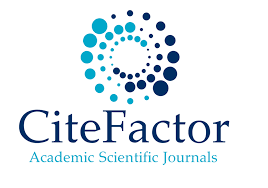ANALISIS SPASIAL: MELACAK TRANSFORMASI LAHAN GAMBUT DAN IMPLIKASINYA TERHADAP EKONOMI MASYARAKAT
DOI:
https://doi.org/10.36277/geoekonomi.v15i1.339Keywords:
analisis spasial, lahan gambut, ekonomi masyarakatAbstract
This research aims to determine the condition of land use changes in peatlands. Where peatlands determine the resilience of Palangka Raya City through the level of vulnerability to disasters due to land and forest fires in peat conservation areas in the future. The literature review method was used in this research. The research results reveal that land resilience in Palangka Raya City, spatial and land planning factors need to be based on rational considerations in accordance with the existing potential of the area, so that there is efficient use of space without reducing land quality. Then, land conservation factors in Palangka Raya City are stipulated in spatial planning regulations which regulate the delineation and arrangement of cultivation areas and protected areas, developing protected areas as buffer zones, delineation and arrangement of agricultural areas. There are threats to land security in the form of flood disasters, rapid rates of urbanization or immigration, as well as various shocks and pressures, both caused by nature and humans. We need to be aware of this threat so that the peatland ecosystem in Palangka Raya City can be well maintained.
Downloads
References
Ariyaningsih, A., Erik, B., & Sukmara, B. (2021). Kriteria ketahanan kota berdasarkan jenis bencana prioritas di Kota Balikpapan. Region : Jurnal Pembangunan Wilayah Dan Perencanaan Partisipatif, 16(1), 74. https://doi.org/10.20961/region.v16i1.44149
Awal, E. E., Sitanggang, I. S., & Syaufina, L. (2023). Model Prediksi Perubahan Tutupan Lahan Pada Area Kebakaran Lahan Gambut Menggunakan Model Cellular Automata Markov. Jurnal Informatika Dan Teknologi Informasi (JUTEK), 1(3). https://doi.org/https://doi.org/10.56854/jt.v1i3.141
Ballhorn, U. (2012). Airborne and spaceborne LiDAR data as a measurement tool for peatland topography, peat fire burn depth, and forest above ground biomass in Central Kalimantan, Indonesia. Munchen: Ludwig-Maximilian-Universität München.
Calthorpe, P. (2022). Ending Global Sprawl: Urban Standards for Sustainable Resilient Development. The World Bank.
Irma, W., Gunawan, T., & Suratman, S. (2018). Pengaruh Konversi Lahan Gambut Terhadap Ketahanan Lingkungan di DAS Kampar Provinsi Riau Sumatera. Jurnal Ketahanan Nasional, 24(2), 170. https://doi.org/10.22146/jkn.36679
KLHK. (2020). Rencana Perlindungan dan Pengelolaan Ekosistem Gambut Nasional Tahun 2020-2049. Jakarta: Kementerian Lingkungan Hidup dan Kehutanan Republik Indonesia.
Mapilata, E., Gandasasmita, K., & Djajakirana, G. (2013). Analisis Daerah Rawan Kebakaran Hutan dan Lahan Dalam Penataan Ruang Di Kota Palangka Raya. Majalah Ilmiah Globe, 15(2).
Marlina, S. (2016). Arahan Fungsi Kawasan Hutan yang Optimal dalam Rencana Tata Ruang Wilayah Kota Palangka Raya melalui Pendekatan Analisis Spasial. Media Ilmiah Teknik Lingkungan, 1(1), 29–41. https://doi.org/10.33084/mitl.v1i1.137
Noor, Y. R., & Heyde, J. (2007). Pengelolaan Gambut Berbasis Masyarakat di Indonesia. Bogor: Wetlands International - Indonesia Programme.
Rezainy, A., Syaufina, L., & Sitanggang, I. S. (2020). Pemetaan Daerah Rawan Kebakaran Di Lahan Gambut Berdasarkan Pola Sekuens Titik Panas Di Kabupaten Pulang Pisau Kalimantan Tengah. Jurnal Pengelolaan Sumberdaya Alam Dan Lingkungan (Journal of Natural Resources and Environmental Management), 10(1), 66–76. https://doi.org/10.29244/jpsl.10.1.66-76
Tejaningrum, M. A., Ardiansyah, M., & Widiatmaka, W. (2019). Evaluasi Terhadap Penggunaan Lahan dan Pola Ruang dalam Rencana Tata Ruang Wilayah di Kabupaten Pontianak, Provinsi Kalimantan Barat. Jurnal Ilmu Tanah Dan Lingkungan, 19(1), 1–5. https://doi.org/10.29244/jitl.19.1.1-5
Yogi, I. B. P. P. (2019). Lanskap Budaya Kota Palangkaraya: Kajian Nilai Penting Tinggalan Arkeologi Lanskap. PURBAWIDYA: Jurnal Penelitian Dan Pengembangan Arkeologi, 8(1).
Downloads
Published
How to Cite
Issue
Section
License
Copyright (c) 2024 Jurnal GeoEkonomi

This work is licensed under a Creative Commons Attribution 4.0 International License.
You are free to:
Share - copy and redistribute the materials in any medium or format for any purpose, even for commercial purposes.
Adapt - compose, change and develop the material for any purpose, even for commercial purposes.
The licensor cannot revoke these freedoms as long as you follow the license terms.
With the following conditions:
Attribution - you must give appropriate credit, provide a link to the license, and indicate if changes have been made. You may do so in a reasonable manner, but not in any way that suggests that the licensor endorses you or your use.
No additional restrictions - You may not implement legal provisions or technological measures that legally restrict others from doing anything permitted by the license.
Notice:
You do not have to comply with the license for elements of the material that are in the public domain or where your use is permitted by an applicable exclusion or restriction.
No warranties are given. This license may not grant all the permissions necessary for your intended use. For example, other rights such as publicity, privacy, or moral rights may limit how you use the material.







_geoekonomi.png)
_geoekonomi.png)
















